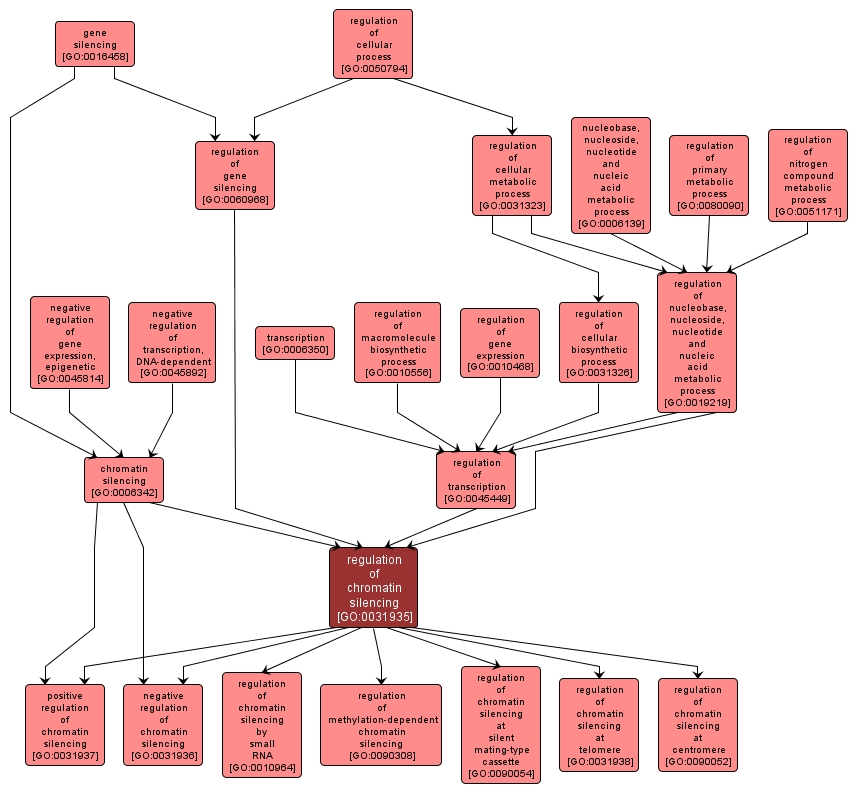GO TERM SUMMARY
|
| Name: |
regulation of chromatin silencing |
| Acc: |
GO:0031935 |
| Aspect: |
Biological Process |
| Desc: |
Any process that affects the rate, extent or location of chromatin silencing. |
Synonyms:
- regulation of heterochromatic silencing
|
|

|
INTERACTIVE GO GRAPH
|














